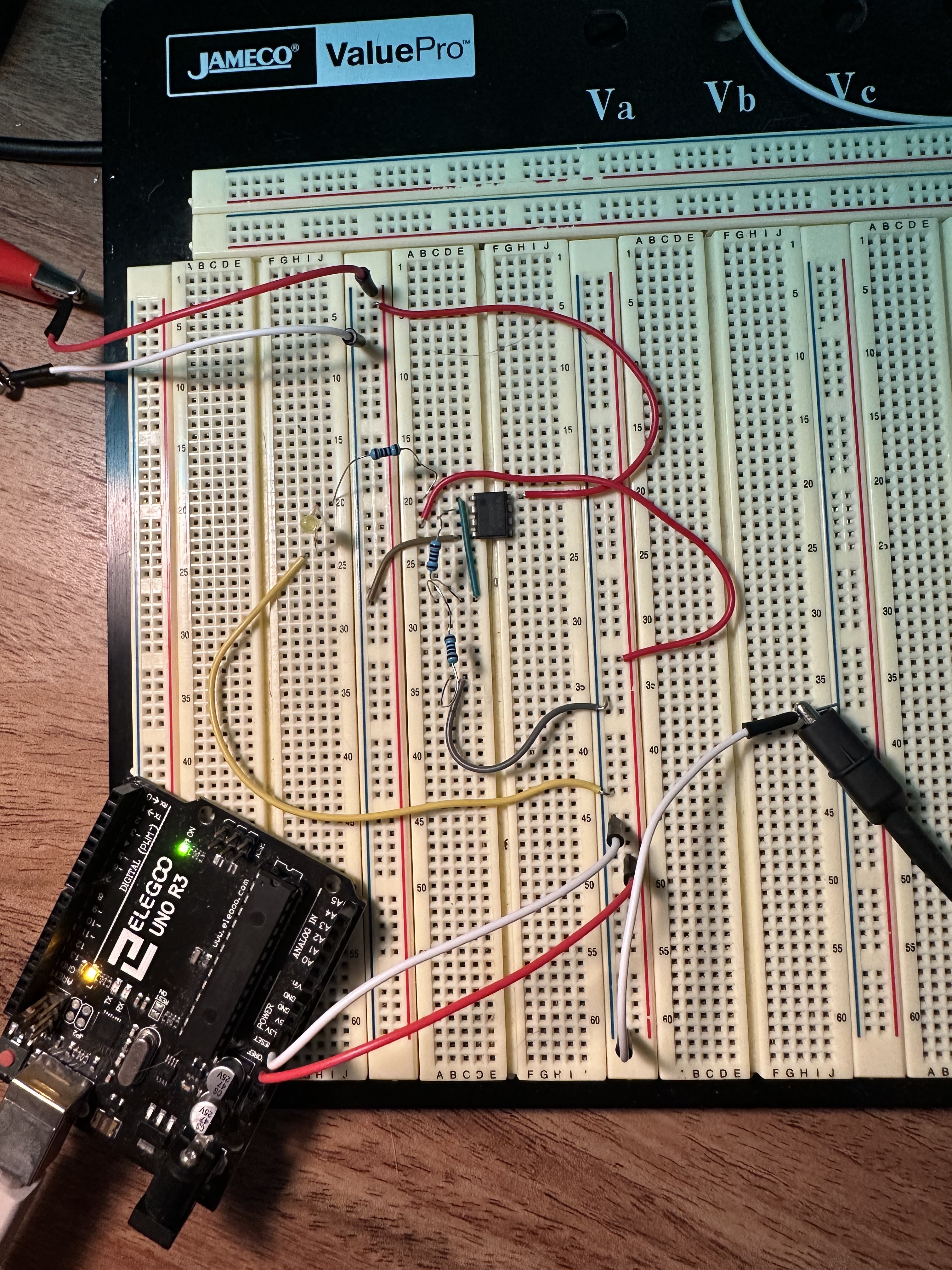this post was submitted on 29 Jun 2023
2 points (100.0% liked)
Ask Electronics
3943 readers
78 users here now
For questions about component-level electronic circuits, tools and equipment.
Rules
1: Be nice.
2: Be on-topic (eg: Electronic, not electrical).
3: No commercial stuff, buying, selling or valuations.
4: Be safe.
founded 2 years ago
MODERATORS
you are viewing a single comment's thread
view the rest of the comments
view the rest of the comments

Use a single power suppy (GND and +12V) and tie the Arduino's GND with that GND.
Your circuit fails because the Arduino's GND is tied to the -12V from the dual power supply, so the +5V that the Arduino outputs equal to -7V on the non-inverting input. Since this is a non-invering schematic, the opamp doesn't invert the signal. Instead, it tries to double the -7V to get -14 on the Out, but since you're powering the opamp with -12V, it can't achieve a voltage that low, so it outputs the maximum it can give: -12V.
The LED turning on even when there's no signal on the non-inverting input is probably a floating input problem. It picks up EMI so it just amplifies that. Try connecting the non-inverting input to GND, the LED should turn off... that or you burnt one of the opamps, lol, try the other one in the package.
I tied the Arduino's GND to the power supply GND, the output is still 10V, tried different ICs as well, not really sure what the issue is at this point. Tying the non inverting input pin to ground does turn OFF the LED, but the led stays on regardless if the 5V is coming from the arduino or not, it seems that the op amp outputs 10V regardless of the non-inverting pin, however if I use different resistors to lower the gain or change the input voltage to 3.3V instead of 5V, I do get the output voltage. I just don't understand how there can be 10V at the output with no voltage from the inverting or non-inverting pin.
Well, you should get 10V. You input 5V, the voltage gain is 2, so the output should be 10V. I don't see a problem here, the circuit is working as expected.
But that's the thing, it outputs 10V even when the 5V rail from Arduino is disconnected at V+ (pin 3).
Put a pot between the arduino's +5V and the circuit, see what happens when you turn it. A 10K to 100K pot should be enough.